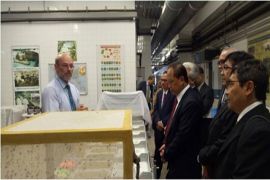Interpol said the new team would "crucially " expand Interpol`s anti-bioterrorism activities to take in Chemical, Biological, Radiological, Nuclear and Explosive (CBRNe) threats.
This will be done "using an integrated approach that leverages international partnerships and expertise across all sectors," said the international organisation during a conference at its headquarters in Lyon, France.
"Interpol Secretary General Ronald K. Noble said such an integrated approach recognised" the CBRNe threat facing all of Interpol`s 188 member countries.
He said the destructive capacity the atom can unleash, as highlighted by the recent nuclear crisis in Japan and the 1986 Chernobyl incident, "was no lost on those who sought to use it to instill terror and threaten innocent lives."
Interpol said the key objective of the new Radiological and Nuclear Terrorism Prevention Unit was "to build police capacity globally to prevent the next bioterrorist attack."
In 2005 Interpol and the International Atomic Energy Agency (IAEA) launched project Geiger to collect exhaustive data on the illicit trafficking of nuclear and radiological materials and evaluate the threat posed.
The project logged 2,500 such smuggling cases, according to Interpol. (*)
Editor: Kunto Wibisono
Copyright © ANTARA 2011








